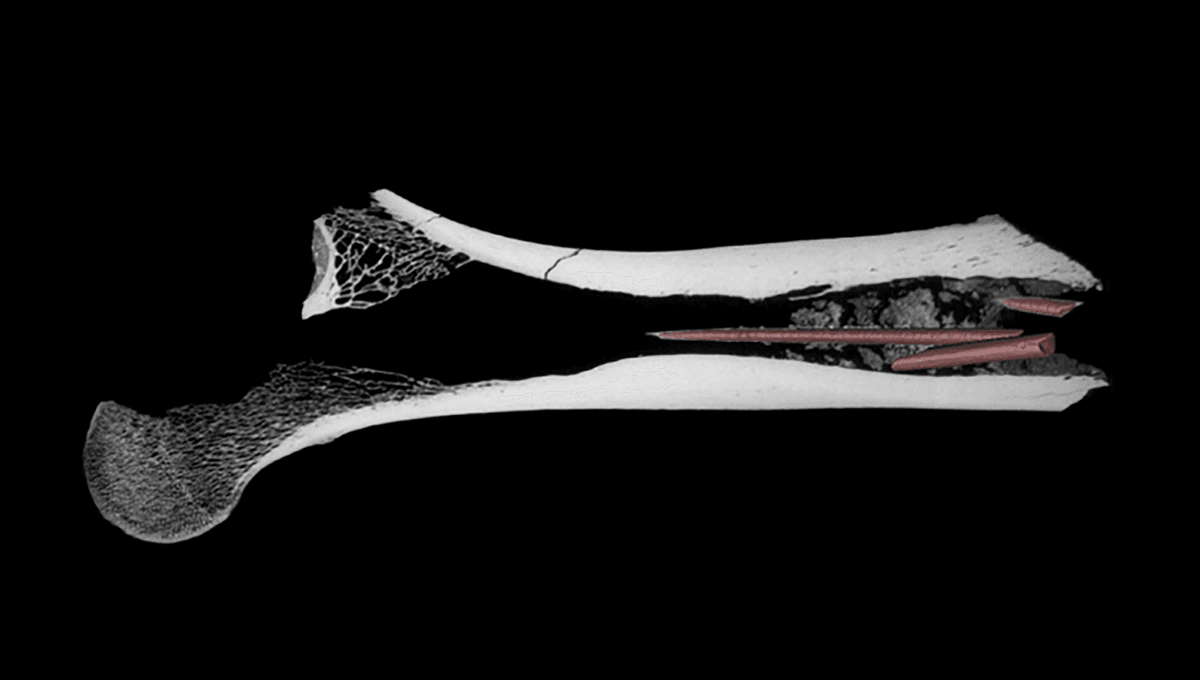
Over 7,000 years ago, a prehistoric chemist concocted a poisonous potion, carefully applied it to the tip of an arrow, and placed it into a quiver made of a femur bone. Fast forward to 2025 and the physical remains of this moment in time are still intact, representing the oldest clear evidence of “multi-component arrow poison” in the world.
ADVERTISEMENT GO AD FREE
Archeologists discovered the femur bone of a bovid in the early 1980s within a layer of South Africa’s Kruger Cave that was inhabited between 6222 BCE and 3901 BCE. Initial X-rays of the leg bone revealed that the marrow cavity contained remains of three bone arrowheads. Researchers at the University of Johannesburg have now taken another look at the skeletal remains and realized they may have missed a key part of the discovery.
Using two forms of chemical analysis – gas chromatography combined with mass spectrometry and ultra-high performance liquid chromatography – the team looked at the chemical matrix surrounding the arrowheads and found several substances that are closely associated with prehistoric arrow poison.
The chemicals detected – digitoxin and strophanthidin – disrupt normal heart function. The researchers also found evidence of ricinoleic acid, which could suggest that ricin was added into the mix as a third toxin.
They also explain in the study that “larger proteins and polysaccharides break down into constituent components with age, which means that there is a chance of additional compounds being missed”, and that despite the sample being pretty well preserved, “we do not know how much was not detectable due to the age of the sample.”
All of the identified toxins are plant-based, but they come from different plant species, suggesting that the prehistoric hunter created a potent mixture using pharmacological knowledge. Furthermore, some of the chemicals may have been sourced from plants that aren’t native to the local region, indicating that the ingredients may have been sourced from far-flung locations.
It’s not known exactly when humans started toying around with the poison-tipped projectiles, although it’s clear how it would have given them a huge advantage. Homo sapiens are some of the best long-distance runners in the animal kingdom, a skill that allowed us to become masters of “persistence hunting”. Essentially, humans are able to stalk their prey for long periods until it is driven to the point of exhaustion.
ADVERTISEMENT GO AD FREE
A well-placed arrow can greatly accelerate this process – and a poison-tipped arrow even more so.
Researchers have previously identified 24,000-year-old evidence of ricinoleic acid in South Africa’s Border Cave, obtained from a castor oil plant (Ricinus communis). Although the seeds of the plant contain ricin, an infamous poison, castor oil can be used medicinally or for treating leather. The chemical was also found on a wooden spoon, which can hardly be considered a deadly object.
Some scientists have argued that 54,000-year-old stone points found in France may have been used as tips for poisoned arrows, but the evidence remains inconclusive.
For now, this latest study presents the “oldest unequivocal complex hunting poison recipe yet identified,” marking a significant milestone in understanding the early use of poisons in human history.
ADVERTISEMENT GO AD FREE
The study is published in the journal iScience.
Source Link: Poison Concoction On Arrow Embedded In 7,000-Year-Old Bone Is World’s Oldest Known